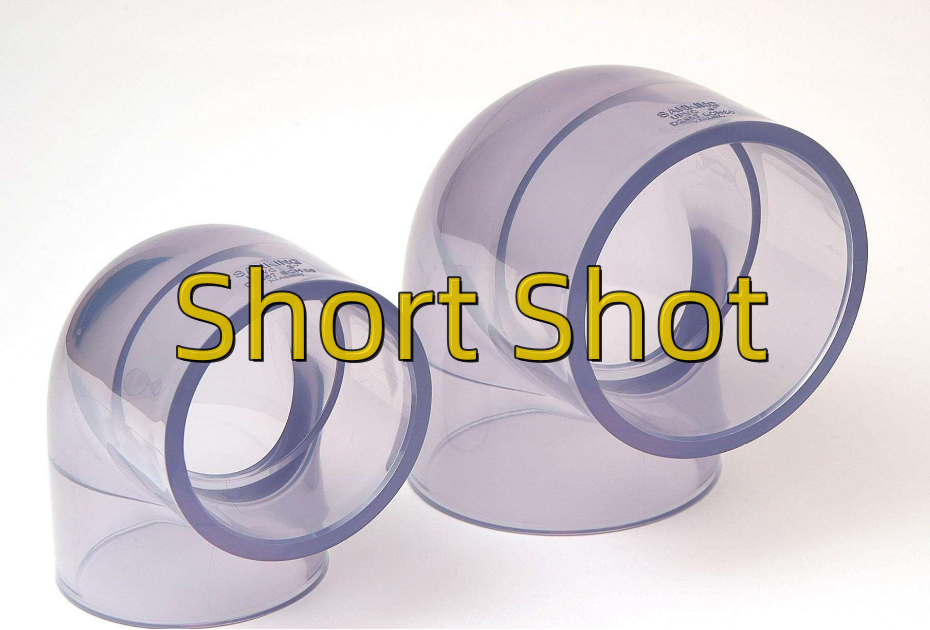Error de formato de correo electrónico
emailCannotEmpty
emailDoesExist
pwdLetterLimtTip
inconsistentPwd
pwdLetterLimtTip
inconsistentPwd

Offer Technical Support and Customized Solutions
The company is committed to creating new and improved plastic materials to meet the evolving demands of the market.

How to deal with Underfilled or Short Shot in Injection Molding?
Underfilled or short shot, also known as insufficient filling or incomplete filling, refers to the phenomenon where the end of the material flow appears partially incomplete or some cavities in multi-cavity molds are not completely filled, especially in thin-walled areas or at the end of the flow path. The main cause of short shots is excessive flow resistance during the molding process, resulting in poor melt flow. These factors can all contribute to underfilling. Now let's discuss the reasons and solutions for underfilled injection molding.
1.Reasons for Underfilling:The main reason for short shots is excessive flow resistance, which prevents the molten material from flowing properly. Factors affecting the length of melt flow include part wall thickness, mold temperature, injection pressure, melt temperature, and material composition. If these factors are not properly managed, they can cause underfilling issues.
The Delayed Flow Effect: Also known as hesitance or stagnation, if there is a relatively thin structure near the gate or in a location perpendicular to the flow direction, such as a rib reinforcement, during the injection molding process, the melt will encounter significant resistance at that position, while the flow remains unimpeded in the main flow direction. As a result, sufficient pressure is only generated to fill the stagnation area when the melt completes filling in the main direction or enters the packing phase. However, due to the thinness of that area and lack of melt flow and heat supply, it has already solidified, leading to underfilling.
2.Solutions for Underfilling: Methods to eliminate underfilling defects:
Material:
-
- Increase the fluidity of the melt.
- Reduce the amount of recycled materials.
- Minimize gas decomposition in raw materials.
Mold design:
-
- Position the gate to ensure that thicker sections are filled first, avoiding the occurrence of stagnation and premature solidification of the polymer melt.
- Increase the number of gates and reduce the flow ratio.
- Increase the size of the runners to reduce flow resistance.
- Properly position and increase the number and size of venting points to prevent poor venting (check if the underfilled areas are burnt).
- Incorporate cooling wells to facilitate the removal of cold material.
- Ensure a reasonable distribution of cooling water channels to avoid local temperature deviations in the mold.
Injection molding machine:
-
- Check if the check valve and the inner wall of the barrel are severely worn, as these can cause significant loss of injection pressure and volume.
- Check the feed opening for any material blockage or bridging.
- Verify if the injection machine has the capacity to meet the molding requirements.
Process conditions:
-
- Increase the injection pressure.
- Increase the injection speed to enhance shear heat.
- Increase the injection volume.
- Increase the barrel and mold temperatures.
- Increase the melt length of the injection machine.
- Minimize the cushion distance of the injection machine.
- Extend the injection time.
- Adjust the position, speed, and pressure of each segment of the injection process appropriately.
Part design:
-
- Avoid designing excessively thin wall thicknesses for the part.
- Eliminate reinforcing ribs that may cause stagnation.
- Minimize variations in part thickness that could lead to localized stagnation that cannot be avoided through mold design.
- Increase the thickness of stagnation areas, and ensure relatively small differences in part thickness to avoid sink marks (indentations).
- Change the gate position to the end of the filling path to generate pressure at that location.
- Initially reduce the speed and pressure during injection to form a thicker solidified layer at the forefront of the melt flow, thus increasing the melt pressure. This method is commonly used as a countermeasure.
- Use materials with good flowability.
Remember, addressing underfilling issues requires a comprehensive approach involving material selection, mold design optimization, machine conditions adjustment, and part design considerations. The combined efforts in these areas can help minimize or eliminate underfilling problems in the injection molding process.
Other problems in injection molding
https://www.toponew.com/blog/resolving-flash-and-burrs-in-engineering-modified-plastic-injection-molding
https://www.toponew.com/blog/analysis-and-solutions-for-bubbles-and-vacuum-bubbles-in-plastic-products
https://www.toponew.com/blog/troubleshooting-sink-marks-in-injection-molded-products
https://www.toponew.com/blog/injection-molding-blog--understanding-and-addressing-warping-defects
https://www.toponew.com/blog/troubleshooting-cracking-and-whitening-issues-in-injection-molding-processplxzp

